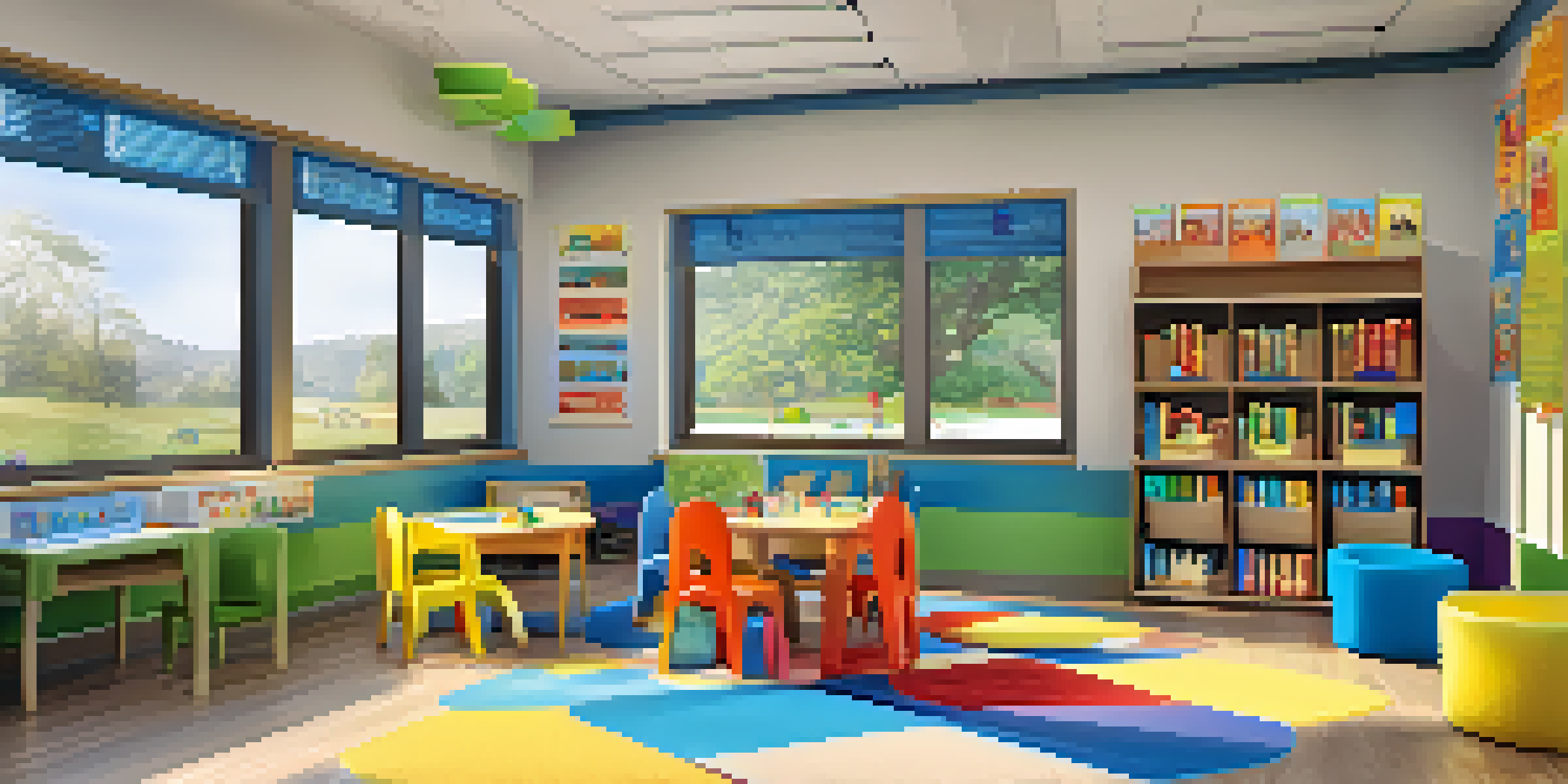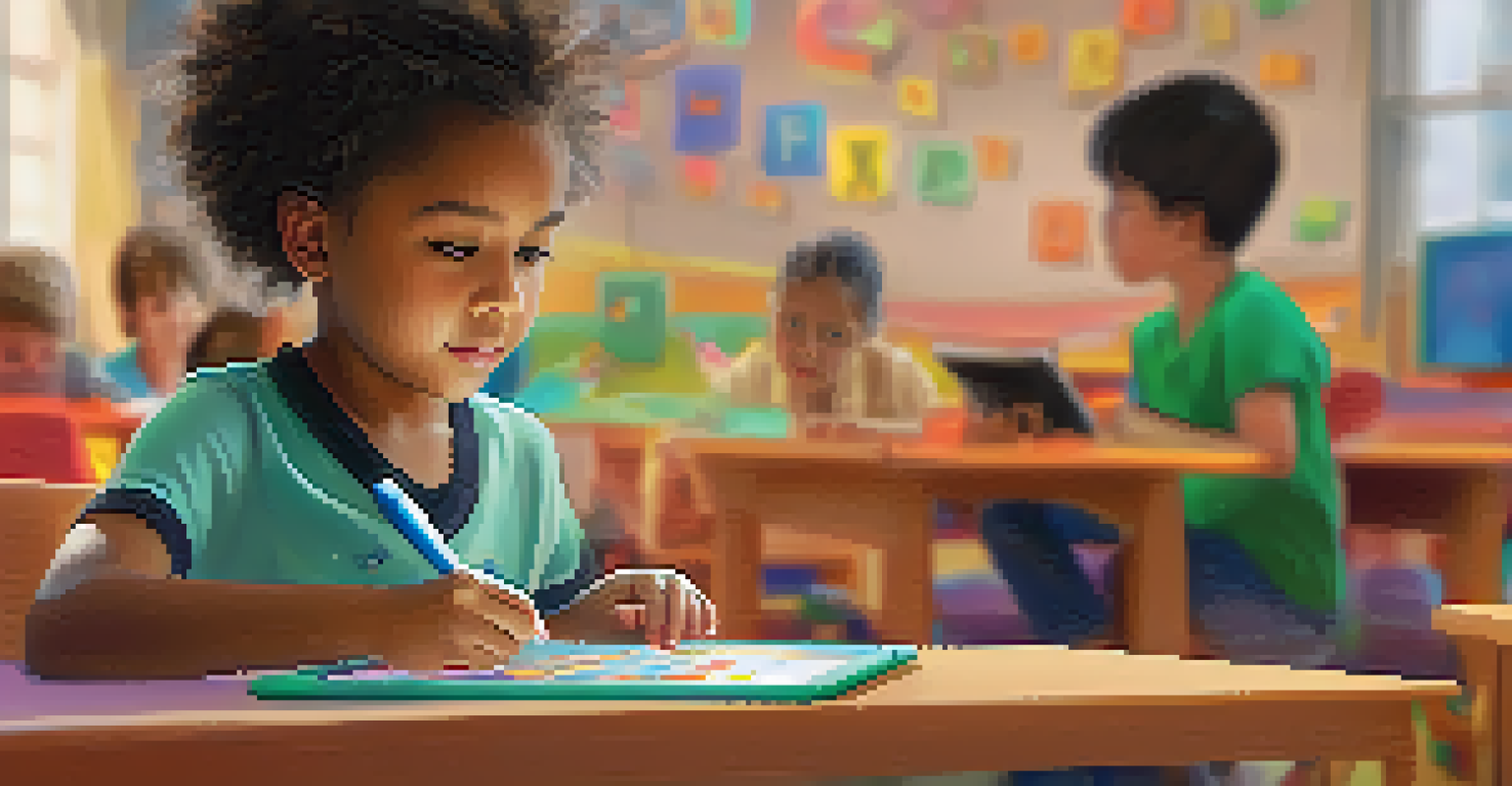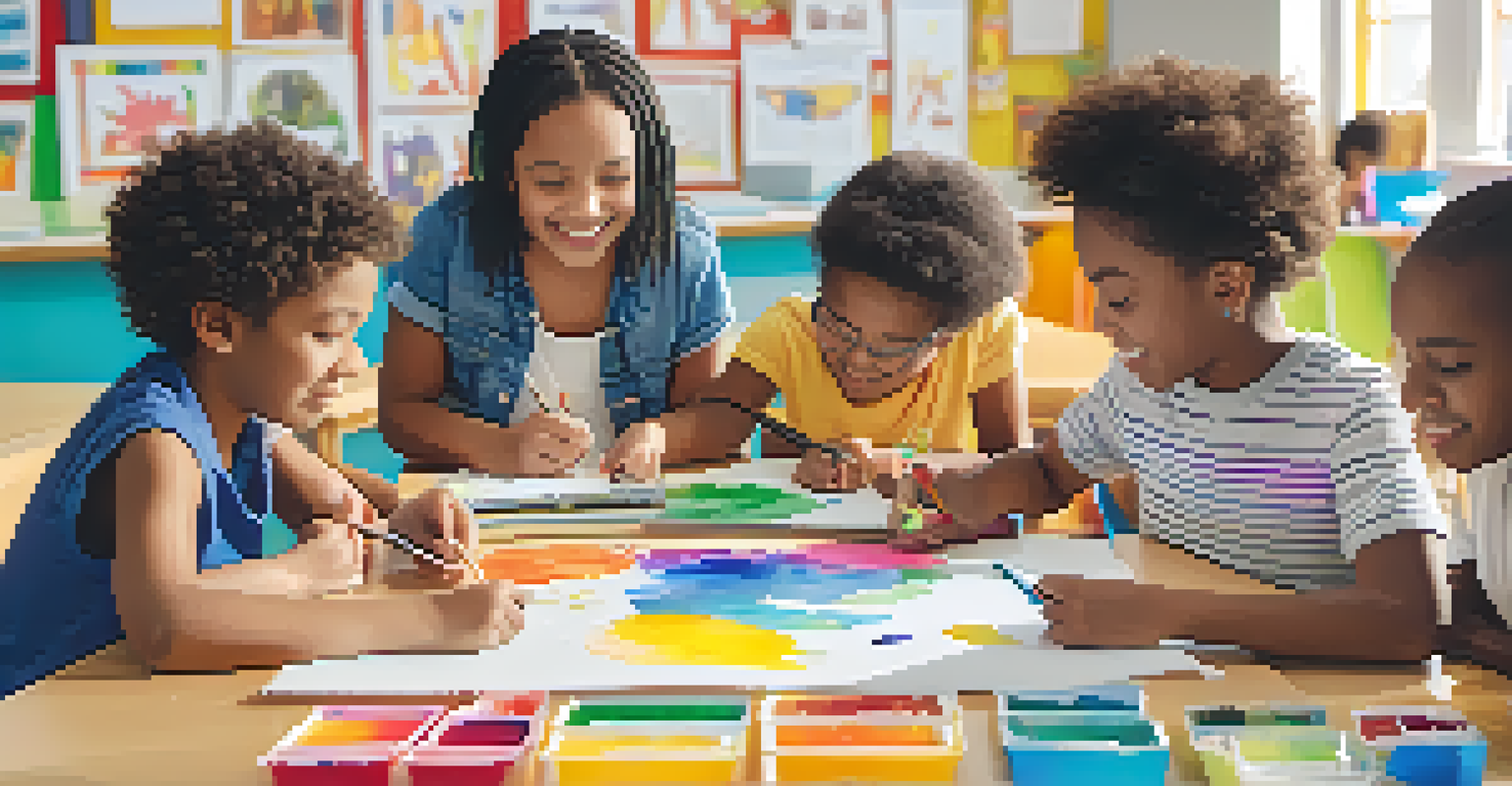Adaptive Learning in Early Childhood Education: Key Insights

Understanding Adaptive Learning: A Brief Overview
Adaptive learning is an educational approach that customizes learning experiences based on individual needs. In early childhood education, this means recognizing that each child learns differently, and tailoring lessons accordingly. This method helps create a more inclusive environment, allowing every child to thrive at their own pace.
Adaptive learning enables educators to tailor instruction to meet the unique needs of each child, fostering a more inclusive and effective learning environment.
Imagine a classroom where each child has a unique learning path, much like a choose-your-own-adventure book. Instead of a one-size-fits-all curriculum, educators can adjust the content and methods to suit each child's interests and abilities. This not only enhances engagement but also builds confidence as children experience success in their learning journeys.
As we explore adaptive learning further, it’s essential to understand its benefits and practical applications. By integrating technology and ongoing assessments, educators can offer personalized feedback and resources, ensuring that each child receives the support they need to flourish.
The Role of Technology in Adaptive Learning
In today's digital world, technology plays a crucial role in implementing adaptive learning strategies. Tools such as educational apps and interactive platforms allow teachers to monitor progress and adjust lessons in real-time. These resources enable children to engage with content that resonates with them, making learning more enjoyable.

For example, consider a scenario where a child struggles with basic math concepts. With adaptive learning technologies, the educator can identify this challenge and provide tailored activities that focus on those specific skills. This immediate feedback loop helps address learning gaps more efficiently than traditional methods.
Personalized Learning Paths
Adaptive learning customizes educational experiences to meet individual needs, fostering engagement and success.
Moreover, technology can enhance collaboration among peers, fostering a supportive learning community. Children can work together on projects, share insights, and learn from each other's strengths, creating a rich tapestry of shared knowledge and experiences.
Creating a Personalized Learning Environment
A personalized learning environment is essential for effective adaptive learning. This involves designing classrooms that cater to various learning styles, whether visual, auditory, or kinesthetic. By incorporating diverse teaching techniques, educators can engage all learners and ensure no child is left behind.
The future of education lies in personalized learning, where technology meets the individual needs of each student.
Picture a vibrant classroom filled with different learning stations, each tailored to specific subjects or skills. One corner might feature a reading nook with interactive storybooks, while another could focus on hands-on science experiments. Such environments ignite curiosity and encourage children to explore topics that interest them.
Additionally, involving families in the learning process enhances personalization. By collaborating with parents and caregivers, educators can gain insights into children’s interests and challenges outside the classroom, creating a holistic approach to their education.
The Importance of Ongoing Assessment
Ongoing assessment is a cornerstone of adaptive learning. Regular check-ins help educators understand each child's progress and adjust instruction as needed. These assessments can take various forms, from informal observations to structured tests, ensuring a comprehensive view of a child's abilities.
For instance, a teacher might observe how a child interacts during group activities or note their responses to specific tasks. This information is invaluable for tailoring future lessons and interventions. It allows educators to celebrate achievements and address any areas of concern promptly.
Technology Enhances Learning
Digital tools enable real-time adjustments and tailored feedback, making learning more enjoyable and effective.
Furthermore, involving children in their assessments fosters a sense of ownership over their learning. When children understand their strengths and areas for improvement, they become more motivated to engage in the learning process and set personal goals.
Fostering Social-Emotional Development
Adaptive learning isn't just about academics; it also plays a significant role in social-emotional development. By recognizing each child's emotional needs and learning preferences, educators can create a nurturing atmosphere that promotes resilience and emotional intelligence. This is particularly important in early childhood, where social skills are foundational.
Consider a scenario where a child feels anxious during group activities. An adaptive approach allows the educator to provide additional support, perhaps by pairing them with a buddy or offering alternative activities that build confidence. Such strategies help children develop coping mechanisms and strengthen their social connections.
Moreover, fostering a sense of community within the classroom encourages empathy and collaboration. When children learn to appreciate each other's differences, they not only enhance their social skills but also contribute to a more inclusive environment.
Challenges and Solutions in Implementing Adaptive Learning
While adaptive learning offers numerous benefits, it also presents challenges that educators must navigate. One common hurdle is the need for professional development; teachers must be trained to effectively utilize adaptive learning tools and strategies. Without proper training, the potential of adaptive learning may not be fully realized.
Additionally, resource limitations can hinder the implementation of adaptive learning practices. Many educators may struggle to access the necessary technology or materials. However, creative solutions, such as leveraging community resources or seeking grants, can help overcome these barriers and enhance educational opportunities.
Ongoing Assessment is Key
Regular assessments help educators track progress and adapt instruction, empowering children to take ownership of their learning.
Finally, fostering a supportive school culture is vital for successful adaptation. By promoting collaboration among teachers and encouraging open dialogue about challenges and successes, schools can create an environment that embraces innovation and continuous improvement.
The Future of Adaptive Learning in Early Childhood Education
Looking ahead, the future of adaptive learning in early childhood education appears promising. As technology continues to evolve, so will the tools available to educators. Innovative platforms and resources will enable even more personalized learning experiences, setting the stage for children to thrive.
Moreover, the growing recognition of the importance of social-emotional learning will further integrate adaptive practices in classrooms. Educators will increasingly focus on developing not just academic skills but also emotional intelligence and resilience in young learners.

Ultimately, the goal of adaptive learning is to empower children to become lifelong learners. By fostering curiosity, adaptability, and a love for learning, we can prepare the next generation for a rapidly changing world, ensuring they have the skills and confidence to navigate their futures.